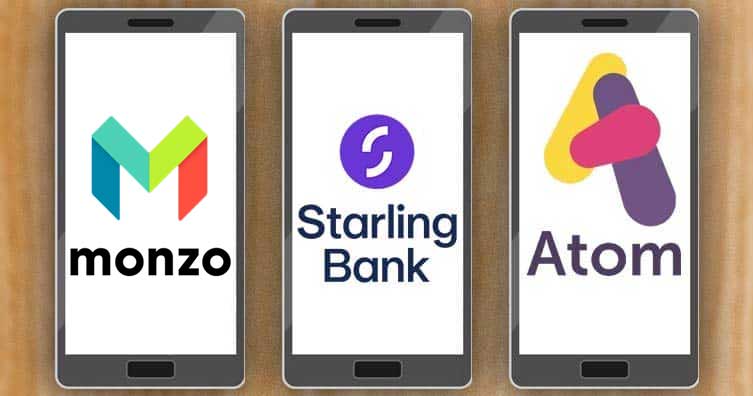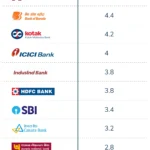Introduction
In today’s fast-paced digital economy, entrepreneurs and small business owners face growing demands for flexibility, efficiency, and real-time insight into their financial operations. Traditional banking models, anchored in brick-and-mortar branches and limited online interfaces, can no longer keep pace with the agility required to manage day-to-day business finances.
This shift in customer expectations has given rise to app-based business bank accounts mobile-first platforms designed specifically to empower companies of all sizes with instant access, streamlined workflows, and sophisticated financial tools. As businesses around the world continue to embrace remote work, e-commerce, and global partnerships, the allure of conducting all banking activities through a smartphone or tablet has never been more compelling.
From small startups seeking to eliminate overhead costs to established enterprises striving to optimize cash flow, app-based business bank accounts present a modern solution that can transform the way you manage your company’s money.
App-based business banking extends far beyond simply having an app counterpart to your existing account. These platforms are built from the ground up with digital priorities in mind, integrating features such as automated bookkeeping, real-time transaction monitoring, and seamless third-party integrations.
By removing the friction of manual data entry and delayed processing times, mobile business banks offer a holistic financial ecosystem where invoicing, expense tracking, and payment reconciliation can all be handled within a unified interface. Furthermore, these digital banks often maintain transparent fee structures and competitive pricing plans that appeal to cost-conscious organizations. As a result, companies can redirect time and resources usually allocated to administrative tasks toward strategic initiatives that foster growth.
In the sections that follow, we will explore the multifaceted benefits of choosing an app-based business bank account from enhanced accessibility and robust security to advanced analytics and scalability demonstrating why this next generation of banking is ideal for businesses intent on thriving in the digital age.
Enhanced Accessibility and Convenience
24/7 Account Access Anywhere
One of the most transformative advantages of an app-based business bank account is the ability to access your finances at any time and from any location. Unlike traditional bank branches that operate on fixed schedules, mobile banking applications empower business owners to check balances, review transactions, and initiate transfers outside of normal banking hours.
This round-the-clock availability is particularly beneficial for businesses with international clients or partners in different time zones, where delays in processing payments can lead to late fees or strained relationships. Moreover, remote teams can stay aligned on financial matters without needing to coordinate a visit to a physical branch, enabling decisions and approvals to occur instantly through a few taps on a mobile screen.
Real-Time Notifications and Alerts
In addition to always-on access, app-based business bank accounts provide real-time notifications for critical account activities. Instant alerts for incoming and outgoing payments, low-balance warnings, and any unusual account activity help business owners maintain complete visibility and control. By receiving immediate updates, teams can respond swiftly to potential issues such as fraudulent transactions or cash shortages before they escalate.
This proactive approach to account monitoring reduces risk and enhances peace of mind, as managers no longer need to manually reconcile statements at the end of each day or week to stay informed. Instead, the app continually watches over your account, delivering concise alerts that keep you in the loop at all times.
Streamlined Financial Management
Integrated Accounting and Bookkeeping Tools
Managing a business’s finances involves a myriad of tasks, including reconciling bank statements, categorizing expenses, and generating financial reports. App-based banks often include built-in accounting and bookkeeping integrations that automatically sync transactions with popular accounting software. These integrations drastically reduce manual data entry, minimize errors, and ensure that ledgers remain up to date.
Instead of exporting CSV files and uploading them into separate systems, business owners can rely on real-time feeds that populate expense categories, tag vendors, and update profit and loss statements continuously. This seamless data flow creates a single source of truth for your company’s financial health, allowing you to make informed strategic decisions with confidence.
Expense Tracking and Receipt Management
Beyond accounting integrations, many mobile business banks incorporate features for tracking expenses and managing receipts directly through the app. Users can photograph receipts with their smartphone cameras and attach them to corresponding transactions in seconds. Optical character recognition (OCR) technology then extracts relevant details such as vendor names, dates, and amounts—automatically populating expense records.
This functionality not only saves hours of tedious paperwork but also simplifies audit readiness by maintaining a digital archive of every expense. By consolidating receipts and bank data within the same platform, business owners and accountants gain a holistic view of spending patterns, enabling tighter budget controls and improved forecasting accuracy.
Cost-Efficiency and Transparent Pricing
Lower Fees Compared to Traditional Banks
Traditional business bank accounts often come with a complex array of fees: monthly maintenance charges, transaction fees, minimum balance penalties, and hidden service costs. In contrast, app-based business banks typically offer more competitive fee structures designed to appeal to small and medium-sized enterprises. Many mobile banks eliminate monthly maintenance fees altogether, substituting them with a straightforward pay-as-you-go approach or a modest flat subscription.
Because these digital banks do not maintain physical branches, they incur lower overhead, savings that are frequently passed on to customers. For budget-conscious startups and growing companies, reducing banking fees by even a small percentage can free up capital for critical investments in product development, marketing, or staffing.
Predictable Pricing Plans
Clarity and predictability in pricing are paramount for businesses that require precise budgeting. App-based business bank accounts often present transparent, tiered pricing plans that clearly outline what services are included at each level. Whether you need a basic plan with essential features or a premium package that offers higher transaction limits, in-depth analytics, and concierge support, the cost is known upfront. This eliminates unexpected charges and simplifies financial planning.
Furthermore, many digital banks allow businesses to switch plans easily as their needs evolve, ensuring that you never pay for features you don’t use. This level of adaptability ensures that businesses can scale their banking services in parallel with growth trajectories, aligning costs directly with usage.
Advanced Security Measures
Biometric Authentication and Encryption
Security is a top concern for any organization entrusting sensitive financial data to a banking platform. App-based business banks address these concerns by leveraging state-of-the-art security protocols. Biometric authentication—such as fingerprint and facial recognition adds an extra layer of protection, ensuring that only authorized users can access the app. Additionally, industry-leading encryption standards safeguard data in transit and at rest, preventing unauthorized interception.
Many mobile banking apps also require multi-factor authentication (MFA), combining something only the user knows (a password or PIN) with something only the user possesses (a trusted mobile device or hardware token). These measures collectively create a robust security framework that rivals, and in some cases surpasses, that of traditional banks.
Fraud Detection and Customer Protections
Beyond authentication, app-based business banks invest heavily in monitoring and fraud detection systems. Machine learning algorithms analyze transaction patterns in real time, flagging anomalies that may indicate unauthorized activity or account compromise. When suspicious transactions are detected, the system can automatically pause further processing and alert the account holder for verification.
In the event of a confirmed fraud, many digital banks offer comprehensive customer protections, including chargeback mechanisms and zero-liability policies for unauthorized transactions. This combination of proactive monitoring and responsive safeguards cultivates trust among business users, who can rest assured that their funds and data are protected at every step.
Seamless Payment and Transfer Solutions
Instant Domestic and International Transfers
A key advantage of app-based business bank accounts is the ability to initiate instant payments and transfers directly from the mobile app. For domestic transactions, many digital banks leverage modern payment rails to deliver near-instant settlement, eliminating the standard delays associated with traditional clearinghouses. When it comes to international transfers, app-based banks partner with global payment networks and fintech platforms to provide competitive exchange rates and reduced fees.
This ensures that businesses engaging in cross-border trade or servicing international clients can move funds efficiently without incurring exorbitant costs or waiting days for funds to arrive. The convenience of launching transfers from your smartphone, coupled with transparent visibility into fees and exchange rates, revolutionizes the way companies handle both local and global payments.
Payment Integration with Business Platforms
App-based business banks understand that modern companies rely on a diverse ecosystem of software from e-commerce platforms to payroll services and point-of-sale systems. To cater to these needs, many mobile banks offer direct integrations or open APIs that enable seamless payment workflows across third-party applications.
For example, an online retailer can synchronize sales revenue from their e-commerce store directly into their bank account, or a service provider can automatically pay subcontractors through payroll software. These integrations minimize manual intervention, reduce errors, and free up valuable administrative bandwidth. By embedding banking capabilities within the tools businesses already use, app-based banks become an integral part of daily operations rather than just a standalone service.
Data Analytics and Insights
Customizable Reports and Dashboards
In any business, accurate and accessible data is vital for strategic decision-making. App-based business bank accounts distinguish themselves by offering built-in analytics dashboards that provide real-time financial insights. Users can generate customizable reports such as cash flow projections, expense breakdowns, and revenue trends directly within the app.
Interactive visualizations enable business owners to identify patterns, pinpoint cost-saving opportunities, and monitor key performance indicators with ease. These insights shed light on critical aspects of financial health, empowering teams to make proactive adjustments and refine their financial strategies. By centralizing analytics tools within the banking interface, mobile‐first banks democratize access to business intelligence, ensuring that every stakeholder can better understand and influence the company’s bottom line.
Actions Driven by Financial Data
Beyond passive reporting, some app-based banks integrate actionable features that bridge analytics with execution. For instance, if the dashboard highlights a surge in recurring subscription fees, the platform may recommend negotiating lower rates with vendors or switching providers. Similarly, insights into seasonal revenue fluctuations can trigger automated savings allocations during high-income periods to prepare for leaner months.
By combining data visualization with embedded recommendations and automation, mobile business banks transform raw numbers into tangible next steps. This approach catalyzes continuous improvement, helping businesses optimize their financial operations on an ongoing basis.
Scalability and Customization
Tailored Features for Growing Businesses
Every business evolves over time, and its banking needs change accordingly. App-based business bank accounts accommodate this growth through modular feature sets and scalable infrastructure. Entry-level plans might focus on fundamental banking functions and expense management, while advanced offerings introduce features such as multi-user access controls, custom role permissions, and advanced payroll capabilities.
As your organization expands, you can unlock additional modules such as corporate credit cards, merchant services, or international payroll without migrating to a separate platform. This modularity ensures a smooth transition through each growth milestone, eliminating disruptive data migrations or system overhauls.
API Integration and Third-Party Apps
For companies with unique requirements, app-based banks often provide developer-friendly APIs that facilitate deep customization. Engineering teams can build bespoke integrations that automate complex financial workflows, syncing data across internal systems such as ERPs, CRMs, and inventory management platforms. This level of extensibility transforms the mobile banking app into a central hub for financial operations tailored precisely to the business’s needs.
Whether you need to orchestrate payments based on real-time production metrics or trigger refunds automatically upon order cancellations, API access empowers businesses to craft bespoke solutions that drive operational excellence.
Improved Cash Flow Management
Invoice Automation and Payment Reminders
Maintaining steady cash flow is a perennial challenge for businesses, particularly small enterprises that may lack dedicated accounting staff. App-based business banks address this pain point by offering invoice generation and tracking tools within the mobile app. Business owners can create professional invoices on the go, send them directly to clients, and monitor payment statuses in real time.
Automated payment reminders dispatch via email or text to customers with outstanding balances, reducing the need for manual follow-up calls. By accelerating payment cycles and minimizing receivables aging, these features help businesses shore up cash flow and reduce the strain on working capital.
Working Capital Solutions
Beyond managing receivables, some app-based banks extend lending options designed to improve liquidity. These working capital products including lines of credit, short-term loans, and merchant cash advances are often underwritten within the app based on transaction history and financial performance data.
The streamlined application process uses existing account data to assess creditworthiness, enabling faster approvals and disbursements. By offering these financing options within the banking environment, digital banks provide a one-stop shop for both day-to-day transactions and growth capital, helping businesses seize opportunities without lengthy paperwork or rigid collateral requirements.
Dedicated Customer Support
In-App Chat and Expert Assistance
Despite the automation and self-service capabilities inherent in app-based banking, there are times when personalized support is invaluable. Recognizing this, many mobile business banks embed live chat features directly within the app, connecting users to financial experts and support agents in real time.
Whether you need assistance with an unusual transaction, guidance on a new feature, or clarification on compliance requirements, in-app chat ensures that help is always just a few taps away. This level of responsiveness enhances user satisfaction, as businesses no longer need to navigate cumbersome phone trees or wait days for email responses.
Community and Learning Resources
In addition to direct support channels, leading app-based banks cultivate online communities and knowledge bases where business owners can access tutorials, webinars, and peer forums. These resources cover a range of topics from optimizing account settings to leveraging advanced analytics enabling users to deepen their understanding of the platform and make the most of its features.
By fostering an ecosystem of continuous learning, mobile business banks empower entrepreneurs to build stronger financial acumen, translating into better operational decisions and long-term success.
Regulatory Compliance and Insurance
Compliance with Banking Regulations
Operating as licensed financial institutions, app-based business banks adhere to the same regulatory standards as their traditional counterparts. This includes compliance with anti-money laundering (AML) regulations, know-your-customer (KYC) requirements, and data protection laws such as GDPR or CCPA, depending on jurisdiction.
By embedding these compliance measures into account opening and transaction monitoring processes, digital banks ensure that businesses remain on the right side of regulatory mandates. Automated KYC checks reduce the administrative burden of verifying new account holders, while continuous transaction screening helps detect and report suspicious activity.
Deposit Insurance Coverage
Just as with conventional banks, funds held in app-based business bank accounts are typically insured by government agencies up to a specified limit. In the United States, for example, deposits are insured by the Federal Deposit Insurance Corporation (FDIC) up to $250,000 per depositor, per institution.
This government-backed guarantee protects business assets in the unlikely event of bank insolvency, providing an additional layer of security and confidence for account holders. With these safeguards in place, businesses can focus on growth without concern for the stability of their banking partner.
Real-World Case Studies and Success Stories
Small Business Owner Transformation
Consider the experience of a boutique marketing agency that transitioned from a traditional bank to an app-based business account. Prior to the switch, the agency struggled with delayed transaction updates and manual reconciliation that consumed hours of staff time each week. After adopting a mobile bank, the team leveraged integrated accounting syncs and real-time alerts to automate bookkeeping tasks.
The resulting efficiency gains freed up the operations manager to focus on client delivery rather than chasing receipt approvals. In the first quarter alone, the agency reduced its bookkeeping labor costs by 40 percent and reinvested those savings into expanding its service offerings.
E-commerce Vendor Scaling with App-Based Banking
An online retailer specializing in handcrafted goods faced mounting fees from international wire transfers and currency conversions when shipping to overseas customers. By onboarding an app-based business bank with competitive FX rates and instant global payment rails, the vendor was able to cut its cross-border transaction costs by nearly 60 percent.
Coupled with automated invoice creation and payment tracking, the retailer accelerated its cash conversion cycle, reducing days sales outstanding from 45 to 20 days. This improved liquidity enabled the business to source new inventory more quickly and explore partnerships in emerging markets without worrying about banking delays or compliance hurdles.
How to Choose the Right App-Based Business Bank Account
Evaluating Your Business Needs
Selecting the ideal mobile bank begins with a clear understanding of your company’s unique requirements. Factors to consider include average monthly transaction volumes, the necessity of international transfers, preferred integrations with accounting or e-commerce platforms, and the level of customer support you anticipate needing. Smaller businesses with straightforward needs may gravitate toward no-fee accounts with essential expense tracking features, while larger organizations might prioritize advanced analytics, API access, or multi-user management controls.
Comparing Features and Fees
Once you have identified your priorities, compare the offerings of leading app-based business banks side by side. Look closely at fee schedules covering account maintenance, transaction limits, wire transfers, and currency conversions and evaluate which plans align best with your projected usage patterns.
Assess the depth of software integrations offered, the robustness of security measures, and the responsiveness of support channels. Trial periods or demo accounts can be invaluable for hands-on evaluation, allowing you to test the user interface, mobile performance, and reporting capabilities before making a long-term commitment.
Trial Periods and User Experience
A practical way to gauge whether an app-based bank suits your organization is to sign up for a trial account or pilot program. Use this period to simulate day-to-day operations processing payroll, sending invoices, and reconciling expenses to assess workflow efficiency and identify any gaps in functionality.
Pay particular attention to the intuitiveness of the mobile app, the speed of transaction processing, and the clarity of in-app notifications. Gather feedback from team members who will rely on the account daily, ensuring that the platform supports collaboration and scales with your evolving needs.
Conclusion
The evolution of business banking toward app-based platforms represents a seismic shift in how companies manage their finances. By delivering unparalleled accessibility, streamlined workflows, transparent pricing, and cutting-edge security, mobile business banks address the limitations of traditional banking models.
Enhanced integrations with accounting software, automated expense management, and powerful analytics empower organizations to make data-driven decisions that propel growth. Furthermore, seamless payment solutions and flexible working capital options enable businesses to adapt quickly to market opportunities without sacrificing liquidity. Whether you oversee a fledgling startup or helm an established enterprise, choosing an app-based business bank account can yield significant time and cost savings, strengthen your financial controls, and position your company for future success.
As you explore the various providers in the market, remember to align your selection criteria with your operational needs and growth objectives, ensuring that your banking partner remains an enabler of innovation rather than an impediment to progress. In an era where agility and insight are paramount, app-based business banking offers the modern capabilities necessary to stay competitive and thrive.




